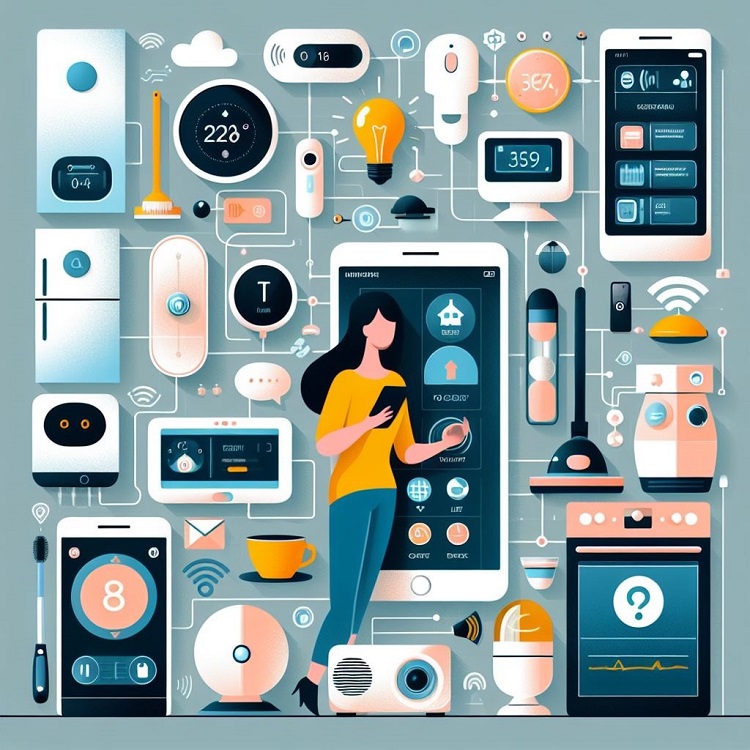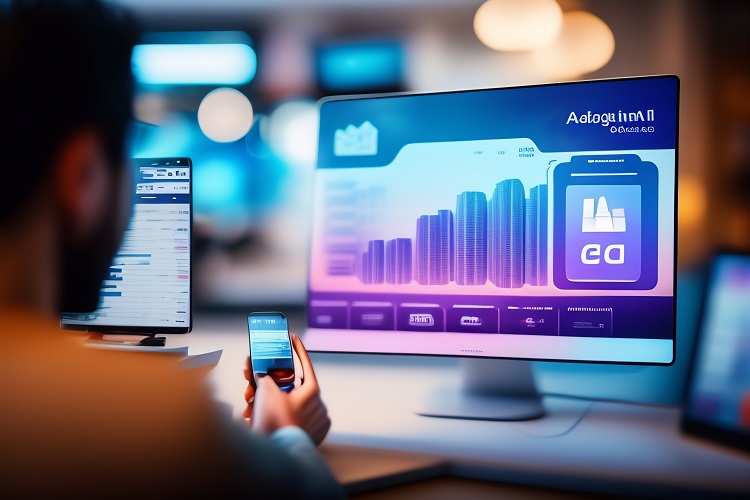Table of Contents
The Internet of Things (IoT) is rapidly converting our world, weaving a web of interconnected devices that gather, transmit, and process data about our lives. Smart homes, wearables, industrial machinery, and even city infrastructure are now part of this vast network, offering convenience, efficiency, and insights like never before. However, with this interconnectedness comes a critical challenge: security. As the number of IoT devices explodes, so does the vulnerability to cyberattacks, data breaches, and privacy concerns. Traditional security measures often need help to keep pace with the evolving threats in the IoT landscape.
This is where blockchain technology emerges as a potential game-changer. Its core principles of decentralization, immutability, and transparency hold immense promise for securing the future of IoT. This article delves into the transformative role of blockchain in bolstering IoT device security, exploring its applications, benefits, and the exciting possibilities it unlocks for a safer and more secure connected world.
Why are IoT Devices Vulnerable?
IoT devices often have limited computing capacity and memory, making them prime targets for hackers. Traditional centralized security models create single points of failure, susceptible to data breaches and unauthorized access. Additionally, these devices’ sheer volume and diversity make it challenging to implement consistent security measures across the board.
Furthermore, IoT sensors collect and transmit sensitive data, such as personal information, health metrics, and even home security footage. This raises critical concerns about privacy and data ownership, demanding robust security solutions to prevent unauthorized access or misuse of this sensitive information.
Enter Blockchain: A Decentralized Fortress for IoT Security
Blockchain technology offers a paradigm shift in security by introducing a decentralized and tamper-proof ledger to record and track every interaction within the IoT network. This distributed ledger, a blockchain, operates without a central authority, making it virtually immune to single-point failures and manipulation.
Here’s how blockchain can fortify IoT device security:
- Enhanced Data Integrity: Every data transaction between IoT devices is immutably recorded on the blockchain, creating a verifiable and tamper-proof audit trail. This ensures data integrity and prevents unauthorized alterations or deletions.
- Decentralized Access Control: Smart contracts and self-executing programs on the blockchain can manage access privileges and permissions for IoT devices. This eliminates the need for centralized servers and strengthens control over who can interact with and collect data from these devices.
- Transparency and Trust: All transactions on the blockchain are transparent and visible to authorized participants, fostering trust and accountability within the network. This allows for easier identification and mitigation of security threats.
- Enhanced Device Authentication: Blockchain-based device authentication protocols can verify the identity and legitimacy of each IoT device within the network, preventing unauthorized devices from infiltrating the system.

Unlocking the Benefits of Blockchain for IoT Security
The integration of blockchain into IoT security unlocks a plethora of benefits:
- Increased Resilience: Decentralized networks are inherently more resilient to cyberattacks, as no single point of failure exists to exploit. This makes blockchain-enabled IoT systems significantly harder to compromise.
- Improved Privacy: Blockchain empowers users with greater control over their data. Users can choose what data is shared, with whom, and for what purpose, enhancing privacy and reducing the risk of unauthorized data access.
- Boosted Trust and Transparency: The blockchain’s transparency fosters trust and accountability between device manufacturers, service providers, and consumers. This can lead to more responsible data collection and usage practices.
- Streamlined Device Management: Blockchain can simplify device management by enabling secure identification, provisioning, and lifecycle management of IoT devices within the network.
Trends in Blockchain for IoT Security: A Glimpse into the Future
Blockchain integration in IoT security is still developing, but the advancements are rapid and promising. Here are some key trends shaping the future of this transformative technology:
- Scalability Solutions: Developers are actively working on addressing the scalability limitations of current blockchain implementations to accommodate the massive scale of the IoT network.
- Standardization Efforts: Industry-wide standardization initiatives are underway to ensure interoperability and compatibility between blockchain platforms and IoT devices.
- Privacy-enhancing Techniques: New solutions are being developed to balance the transparency of blockchain with privacy requirements, allowing for secure data sharing while protecting sensitive information.
- Emerging Applications: Beyond security, blockchain is finding applications in identity management, data monetization, and predictive maintenance for IoT devices.
Putting it into Practice: Real-world Applications of Blockchain in IoT Security
Several exciting examples showcase the practical applications of blockchain in bolstering IoT security:
- Secure Smart Homes: Blockchain-based platforms can manage access control, automate data sharing, and enable secure peer-to-peer energy trading between smart homes and the grid. This can create a more resilient and efficient energy ecosystem while safeguarding user privacy.
- Industrial IoT and Supply Chain Management: In factories and logistics networks, blockchain can track the movement of goods and materials, ensuring their authenticity and provenance. This enhances transparency and trust throughout the supply chain, preventing fraud and tampering.
- Connected Healthcare: Wearables and medical devices can leverage blockchain to securely store and share susceptible patient data. This facilitates secure communication between healthcare providers, patients, and insurance companies, streamlining administrative processes and improving patient care.
- Secure Agriculture: Blockchain can monitor and optimize agricultural processes, from soil health analysis to crop quality control. This fosters sustainable practices, improves traceability of food products, and enhances consumer trust in the food supply chain.
- Smart Cities and Infrastructure: Urban infrastructure like traffic lights and energy grids can benefit from blockchain’s security and transparency. This can enable self-governing systems, optimize resource allocation, and enhance the resilience of critical infrastructure.
These are just a few examples of the myriad ways blockchain revolutionises IoT security. As technology evolves and adoption increases, we can expect even more innovative applications to emerge, transforming how we interact with and secure the interconnected devices around us.
Also Read: The Role of Technology in Job Creation and Economic Growth in the US
The Road Ahead: Challenges and Opportunities
While the potential of blockchain for IoT security is undeniable, challenges remain. Scalability limitations, lack of standardized protocols, and regulatory uncertainties are some hurdles that must be addressed. However, ongoing research and outcome efforts are continuously addressing these challenges, making blockchain an increasingly viable solution for securing the future of the Internet of Things.
The journey towards a secure and interconnected world powered by IoT requires collaboration between technology developers, governments, businesses, and consumers. By embracing innovation, fostering open dialogue, and investing in responsible development, we can unlock the full potential of blockchain to usher in a new era of trust, security, and prosperity in the Internet of Things.

FAQs: Securing the Future with Blockchain and IoT
Q: Why are IoT devices so vulnerable to security threats?
A: Limited computing power, centralized security models, and the sheer volume of devices make them easy targets for hackers. They also collect sensitive data, raising concerns about privacy and data ownership.
Q: How does blockchain improve IoT security?
A: Blockchain’s decentralized ledger provides tamper-proof data recording, decentralized access control, transparency, and enhanced device authentication, making it harder to compromise these devices.
Q: What is the usefulness of using blockchain for IoT security?
A: Increased resilience against cyberattacks, improved privacy and data ownership control, boosted trust and transparency, and streamlined device management are just some of the benefits.
Q: What are some real-world applications of blockchain in IoT security?
A: Secure smart homes, transparent industrial supply chains, secure healthcare data sharing, smart agriculture with traceable food products, and self-governing intelligent city infrastructure are some exciting examples.
Q: What are the challenges facing blockchain adoption in IoT security?
A: Scalability limitations, lack of standardized protocols, and regulatory uncertainties are some hurdles that must be addressed.
Q: What does the future hold for blockchain and IoT security?
A: Continuous research and development, collaboration between various stakeholders, and responsible development are vital to unlocking this technology’s full potential and achieving a secure and interconnected future with IoT.
Q: Are there any specific examples of blockchain-based IoT security solutions I can learn more about?
A: Several innovative platforms and projects are making waves in this field. We recommend you explore projects like IoTeX, OriginTrail, and HiveMQ for specific examples and use cases.
Q: Where can I stay updated on the latest advancements in blockchain and IoT security?
A: Industry publications, tech blogs, and conferences on blockchain and IoT offer valuable insights and updates. Additionally, following leading research institutions and companies in this space can keep you informed.
Final Thoughts: A Secure Future Beckons for the Interconnected World
The intersection of blockchain technology and the Internet of Items presents a revolutionary opportunity to reimagine the way we interact with the world around us. This powerful union promises a future where our myriad devices – from smart homes to wearables to city infrastructure – operate in a secure, transparent, and trustworthy ecosystem.
While challenges remain in scalability, standardization, and regulatory landscapes, the potential of blockchain to fortify IoT security is undeniable. As research and development accelerate and collaboration takes center stage, we can expect to see revolutionary applications emerge across various sectors, transforming industries and improving lives.
In the final analysis, securing the future of IoT doesn’t solely lie in implementing cutting-edge technology. It demands a shift in mindset – embracing decentralized solutions, prioritizing data privacy, and fostering open dialogue between stakeholders. By working together, we can unlock the incredible potential of this interconnected world, ensuring a future where trust, security, and innovation converge to create a truly remarkable reality.




